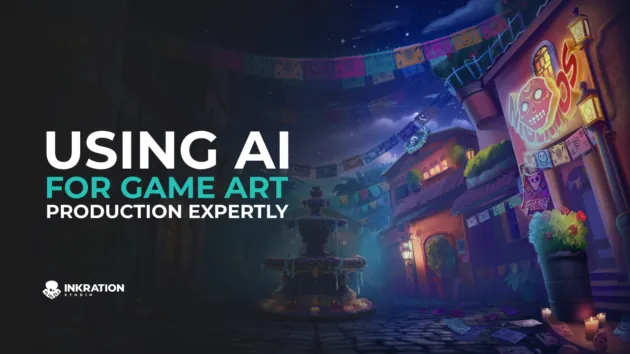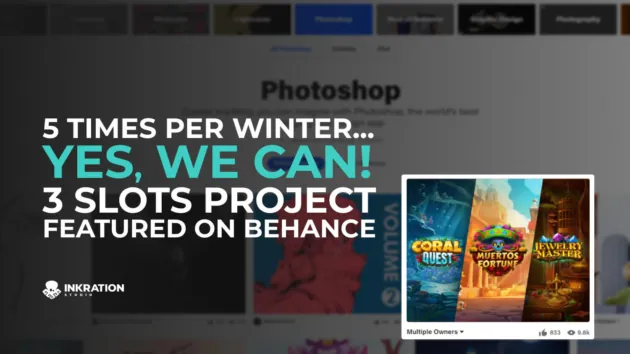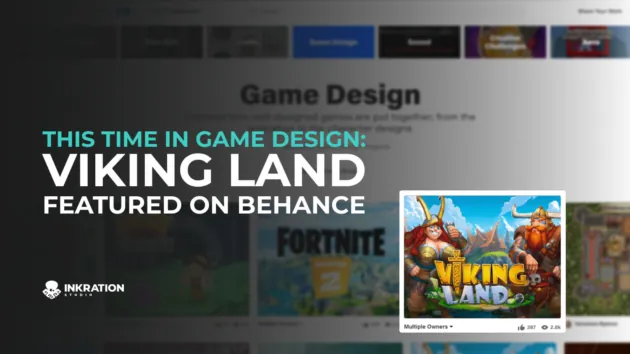
A properly picked art style for modern 2D game shapes their appeal and aesthetic magnetism. It sets it apart from the crowd. It invites different types of player audiences to a unique virtual realm and serves about a thousand more essential roles in the creation, distribution, and consumption of a complete video game.
Properly chosen 2D game art style helps achieve a favorable first impression and stimulate anticipation among the target audience. In turn, neglected, underdeveloped, or poorly analyzed or implemented styling makes even a brand-new, authentic at the core game feel stale and uninviting.
But with tons of ever-emerging titles and waves of artistic tendencies in the industry, how exactly does one come up with a standing-out visual design? Settling on the style confines of a 2D video game requires a special focus on visual appeal, as you are somewhat stripped of the immersive advantages of 3D.
To give you proper guidance in figuring it all out, we must dive into the realm of 2D game art styles. Let’s see what’s what, explore possible choices, and make a better-informed decision based on the hot tips and well-tried practices.
Basic Types of 2D Game Art Styles
Now, 2D art styles are used in games where the visuals are created on a flat plane, like a traditional painting or drawing. It is not all limited there, however. As you may guess, modern 2D titles commonly incorporate lots of 2.5D and 3D assets to achieve striking experiences. There are different style representations and classifications that can overlap. For example, stylized graphics and watercolor or gouache imitation. In fact, there are numerous possibilities.
But right now, your task is to pick a preferred game art approach to set as a foundation. The “best” art style is one that resonates with players, complements the game’s design, and leaves a lasting impression. An awesome indie title or a bigger game can be created using any of the discussed styles. It is all in the way you incorporate all the available assets in your specific project setting.
Still, here are some directions for picking a game’s art style based on the use cases we’ve already seen excel in the game industry.
Let’s explore the following 2D game art styles for your game selection.
Realistic 2D art
Blurring the line between 2D and 3D, realistic 2D art styles combine meticulous detailing with the charm of 2D environments. It is an ultimate statement — game worlds can be made extremely detailed and lifelike in a two-dimensional space, too! Mystery Case Files: Shadow Lake captures the magic of this style and delivers a breathtaking outcome.
Realistic 2D style is commonly found in narrative-driven games, interactive stories, hidden object titles, and those that focus on emotional storytelling. It’s also used in historical games to accurately depict past eras or cities.
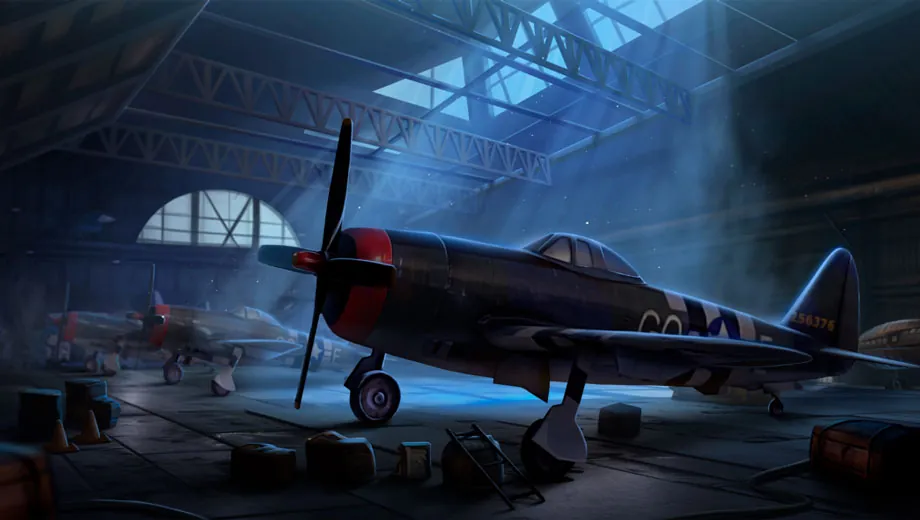
Cartoonish art
Injecting a playful and exaggerated vibe, cartoon-based graphics focus on vibrant colors, larger-than-life characters, and whimsical environments. Games like Gardenscapes use this style to infuse humor and personality into their worlds.
Cartoonish art style is often used in family-friendly games, platformers, casual, and comedic games. It can also be employed in educational titles to engage younger players and make learning more enjoyable.
This 2D game art style can also be designed as a 3D. Game artists use a wide variety of techniques like shading, layering, perspective, and other depth-inducing methods to give certain elements a more three-dimensional appearance. Cartoonish art is often combined with realistic elements to convey both whimsical charm of cartoons and the nuanced details found in realism. Pixar, for example, employs realism when creating backgrounds (especially plants) and textures while keeping characters stylized, with hypertrophied ratios etc. The mix also works perfectly in games.
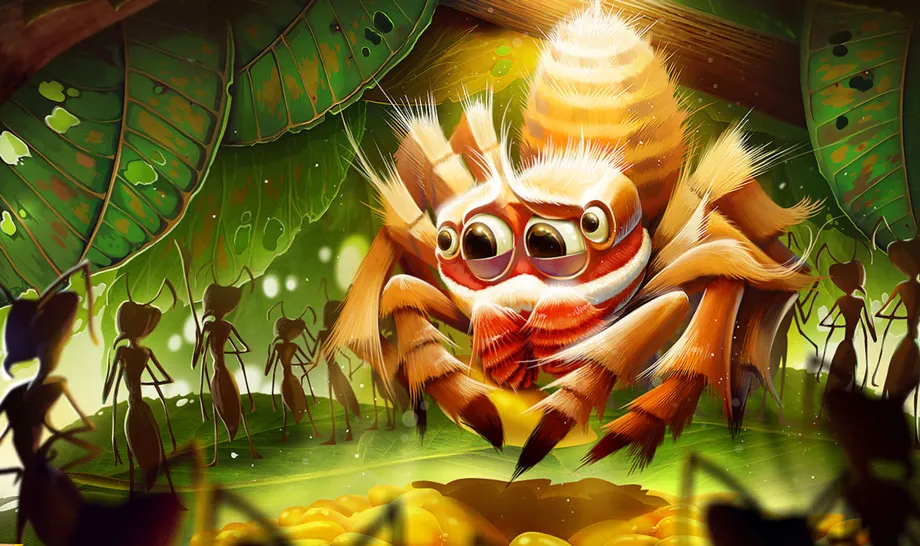
Flat art
Characterized by minimal shading and stark contrasts, flat graphics embrace simplicity while maintaining visual impact. Instead of complex shading, gradients, and textures, it relies on solid colors, clean lines, and geometric shapes to visualize characters, objects, and environments.
Flat art in games often prioritize straightforward controls and mechanics, making them accessible to a wide range of players, including newcomers. This approach also helps achieve striking UI elements and very intuitive gameplay designs. Angry Birds exemplifies the elegance of this style.
As an art style for 2D games, flat graphics are suitable for various genres, including casual, puzzle, strategy games, and RPGs. Flat art also frequently appears in various mobile titles.
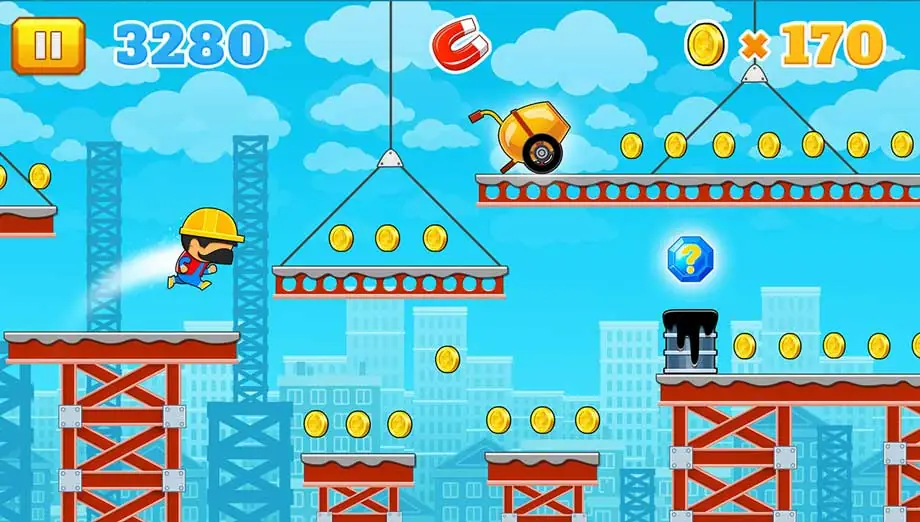
Pixel art
A nostalgic nod to the past, pixel art graphics is a retro style evoking memories of classic arcade and console games. Despite its simple nature, pixel art can convey emotion and atmosphere like no 3D piece, as shown in Undertale, To the Moon, and Fez among many others.
This one holds a truly special place in the hearts of the gamer community, with dozens of new titles coming out paying homage or redoing old-school pixel graphics (Prodeus, Cultic, Blasphemous, etc.).
Pixel graphics efficiently fit indie games, platformers, stylized RPGs, and shooters that want to capture a classic or vintage look. It’s also suitable for games that prioritize gameplay mechanics over realistic visuals. On top of that, the classic pixel art became the basis for voxel art style, giving the gaming community masterpieces featuring eye-catching blocky worlds like Minecraft and The Sandbox.
Vector art
Standing out with crisp lines and real-time scalable visuals, vector art allows for smooth animations and clean aesthetics. All animations here are set off by mathematical equations and are easy to resize without losing quality. A good old Tempest 4000 maintains its retro charm by employing a vector graphics style for all elements, including on-screen text. Hollow Knight uses vector imitation for a distinctive look.
Vector art is often seen in endless runners, platformers, simulations, arcade, casual, and puzzle games. Artists also employ this 2D art style to recreate the classic, pixelated look of retro titles. UI designers use vector graphics for making a crisp, stylish user interface, adaptable to various screen sizes and resolutions.
Cel shading
Mimicking the appearance of hand-drawn animation, cel shading adds depth and contours to characters and objects. Game worlds adorned in cel-shaded graphics look like they come straight out of a comic book, manga or animated show. It uses bold, black lines and flat areas of color. Titles like The Legend of Zelda: The Wind Waker and Jet Set Radio adopt this style to create a visually striking experience. Borderlands uses cel shading too, but it is portrayed in a comic book style.
Cel shading is often used in action-adventure games, RPGs, and games based on animated series. It can create an extraordinary, colorful world that feels both immersive and visually exciting.

Monochromatic art
Using a limited color scheme, monochromatic art style graphics add a sense of intrigue and mystery to a game’s atmosphere. Often artists add an accent color to draw player’s attention to the main character or noteworthy details. Classic Limbo demonstrates how this style can enhance storytelling through visuals that use shades of a single color to create a unique and lingering look. Consider this as well — a good new black-and-white game will surely stand out against the backdrop of all the AAA eye candies out there.
Monochromatic art can be used in horror games to create an eerie ambiance, in puzzle games to emphasize challenges, or in games with a specific thematic focus.
Cutout art
Looking for something unusual and eye-grabbing? A cutout as a 2D game art style employs flat shapes, solid colors, and clear outlines to mimic the appearance of layered paper cutouts. A fun approach well-tested by titles such as Tearaway, Don’t Starve, and Alice: Madness Returns.
Cutout designs are often used in games that want to mimic a handcrafted or diorama look. Puzzle games, interactive stories, platformers, family titles, and games with artistic narratives can benefit a lot from this style. Who’s to say your next big title shouldn’t revive this style?
Ultimate Importance of Unique 2D Art Styles for Games
It is difficult to underestimate how much we need 2D styling to keep the video game market prosperous and exciting. Even 3D-focused games utilize 2D assets for menus, options, backgrounds, and complete environments. What’s more, every 3D project starts with a 2D concept, so the 2D game art will always be cornerstone of the majority of games. Furthermore, as technology advances, designers can craft 3D-like graphics with initially 2D tools to enhance the gaming experience.
Numerous titles are adopting art styles for 2D games, with developers actively exploring diverse options. On the whole, the continuous resurgence of 2D art seems imminent, driven by the pure love of aesthetically-minded gamers all over the globe.
While 3D art offers revolutionary advantages, 2D styles enjoy enduring affection. And as a game creator, it is all the more important for you to achieve a unique, high-quality 2D game art style for the following reasons:
Creating visual identity
In a crowded gaming industry, having unique 2D art vibes is like having a recognizable logo. It becomes a game’s visual identity, instantly distinguishing it from the competition. Players are more likely to remember a game that presents itself with a fresh and distinct visual style. This uniqueness helps in building a dedicated fan base and fosters brand loyalty.
Enhancing immersion
A well-crafted 2D art style can draw players into the game’s world like a captivating storybook. Whether it’s the hand-painted charm of Hollow Knight or the pixelated nostalgia of Stardew Valley, the overall style contributes to the game’s atmosphere and emotional impact. A unique art style enhances immersion, making players feel connected to the game’s universe.
Setting the tone
The art style of a game sets the tone for the entire experience. It’s not just about visuals; it’s about conveying emotions, themes, and narratives. A whimsical art style might signal a lighthearted adventure, while a dark and gritty style could indicate a suspenseful or intense storyline. Players often form expectations based on the art style, which the game can then meet or subvert.
Fostering creativity
A unique 2D video game art style can also drive the creativity of developers and artists. It encourages them to experiment with unconventional designs, put new color schemes to the test, and explore innovative approaches. This creative freedom can lead to groundbreaking visuals that resonate with players on a profound level.
Standing the test of time
Timeless games often possess art styles that remain visually appealing despite the passage of years. A one-of-a-kind 2D art style has the potential to age gracefully, continuing to captivate new generations of players. It’s not limited by the constraints of technology advancements, as some 3D solutions might be.
Picking Your Art Style for 2D Game — Tips and Practices
To make your life easier, here are some more hot takes and recommendations on selecting the one perfect styling for your new title.
- Avoid purely subjective decisions: The target audience should get to shape your future game world as much as you (as the game’s main ideologist) and your design crew do. Which leads us to the following point.
- Study successful cases: Surely, the best inspiration comes from the best examples of implementing this or that art style. We’ve provided a lot of vivid examples of games done in certain styles above (in the “Types of 2D game art styles” section), and if you haven’t played them yet, their proper analysis should give you tons of hints.
- Experiment with prototypes: Create small prototypes using different art styles to see how they feel in action. Some experimentation can help you visualize how the art style affects movement, interactions, and player engagement.
- Test for player feedback: Gather feedback from potential players or a focus group. Their input can provide valuable perspectives and insights you might not have considered. This iterative process can help you refine your art style to align with player preferences.
- Balance aesthetics and performance: Try to keep visuals in line with the mechanics and the overall theme of the game. Some 2D art styles in games might lend themselves better to certain types of interactions, animations, or visual cues. Your task here is to make sure the chosen style enhances the gameplay experience.
Stay true to your vision: While it’s important to consider player preferences and market trends, don’t compromise your artistic vision entirely. Your passion and creativity should shine through in your game’s art style.
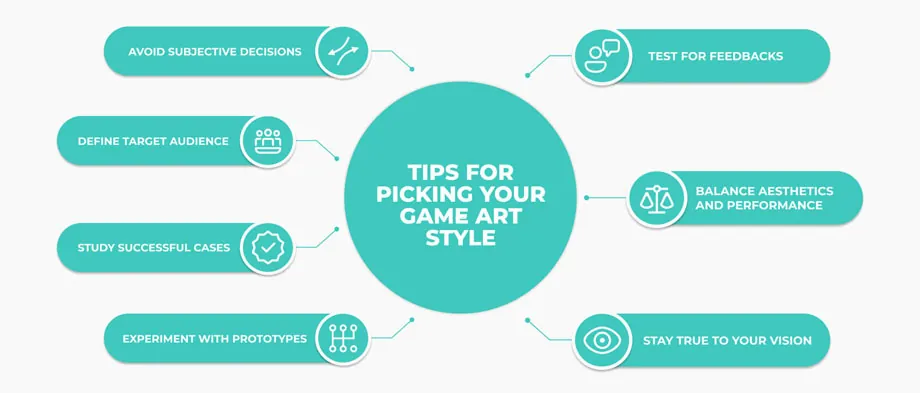
Implementing the chosen art style
With the chosen 2D game art style and a reliable team in hand, your last frontier before kicking the project off is gathering a tech stack. The tech stack is also shaped by choice of style and can include some of the following tech tools and solutions for 2D/3D game design.
Development tools:
- Unity
- Unreal Engine
Design and implementation tools:
- Sketch
- Figma
- GIMP
- Adobe Photoshop
- Adobe Illustrator
- Pixelmator
- SketchBook Pro
- Inkscape
This is where your trusty tech lead, designers, and other development specialists should lead the way, managing the best-fitting tech stack set-up.
Bottom Line
The relevance of 2D art styles remains strong. The enduring market for 2D games demonstrates players’ genuine appreciation for original, well-crafted two-dimensional adventures. On the other side of the fence — there is a huge casual audience, consuming 2D games and apps as perfectly fitting recreational (or even educational) solutions free from all the confusing stuff.
All the reasons are there, and this summarized guide should give you the confidence to make smart, impactful project decisions. Now, the only thing you need is a trusty team of game developers and designers. Let’s set your project off together. Contact us to discuss a 2D game art style that may shape your idea and lay the foundation of a prosperous project.
